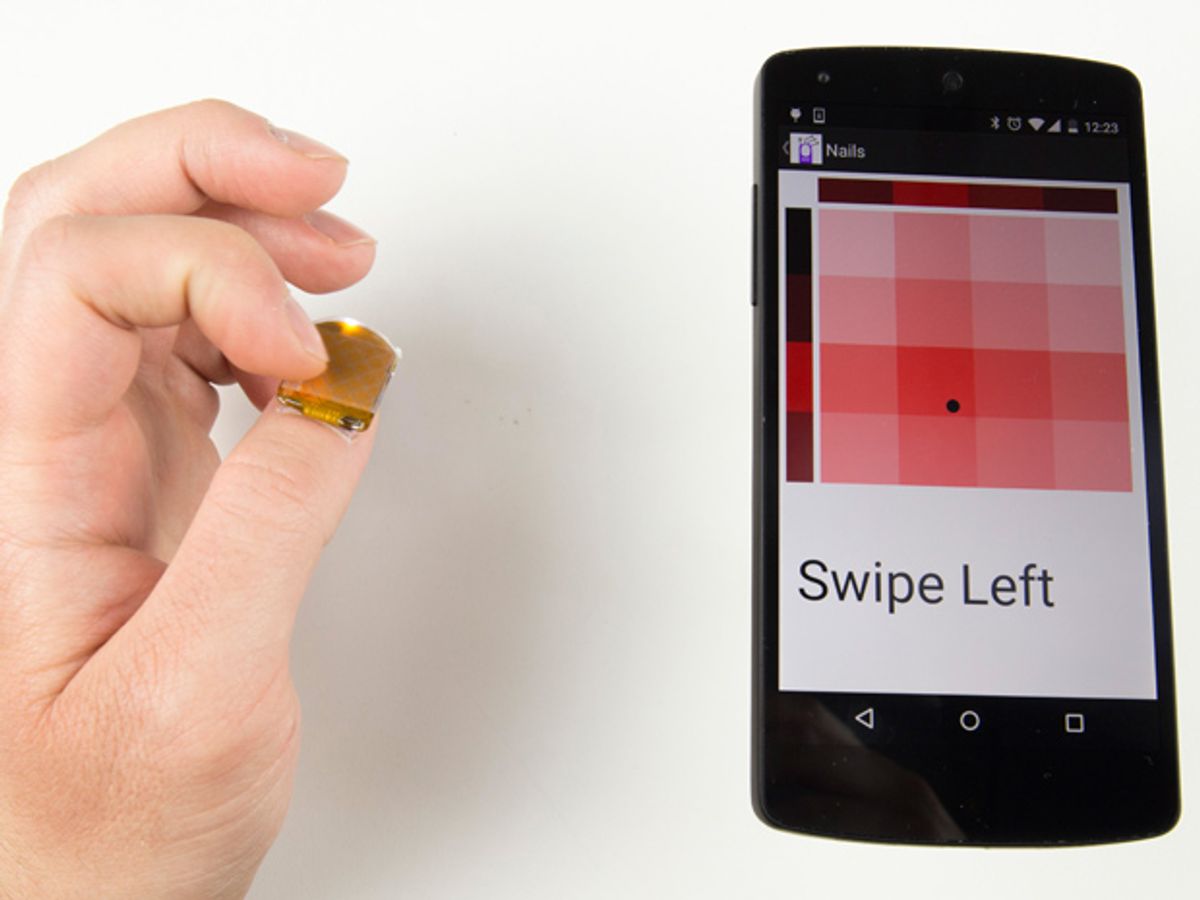A new wearable sensor can turns a person's thumbnail into a miniature wireless track pad, researchers at the MIT Media Lab say.
The device, called NailO, relies on capacitive sensors to register touch; they are the same kind used in the iPhone's touchscreen. It also carries a battery, a micro-controller, a sensor controller, and a Bluetooth radio chip, all in a space no larger than, well, a thumbnail. The MIT scientists will present their findings on 22 April at the Association for Computing Machinery's Computer-Human Interaction conference in Seoul, South Korea.
The researchers envision NailO helping people control wireless devices when their hands are full—for example, answering the phone when they’re cooking, or inspecting a circuit board's layout on a computer while holding a soldering iron. It could also augment mobile and wearable devices by adding an extra input surface—for instance, allowing people typing on cell phones to switch between keyboards for letters, punctuation or emoticons without interrupting their typing.
The researchers also note that NailO is very unobtrusive. This means it could provide a way for people to subtly and discreetly interact with their mobile devices. NailO’s developers imagine someone sitting in an important meeting but attracting minimal attention when he or she needs to send a quick text to a child.
With an average power consumption of 4.86 milliamperes, the NailO prototype can wirelessly transmit data for at least two hours. This, researchers note, this represents the worst-case scenario, as they have not yet optimized the device to account for power yet. They say its battery life can be greatly increased by having the gadget deactivate when not in use.
In the future, the researchers say, the device may combine the electronics onto a single microchip to save space, and use a battery that is only a half-millimeter thick.
Inspiration for the device came to MIT graduate student Cindy Hsin-Liu Kao from colorful stickers that women often apply to their nails in Asia. The researchers suggest that a commercial version of their device might have removable decorations on its surface so that users can customize its appearance to match their outfits.
Charles Q. Choi is a science reporter who contributes regularly to IEEE Spectrum. He has written for Scientific American, The New York Times, Wired, and Science, among others.



